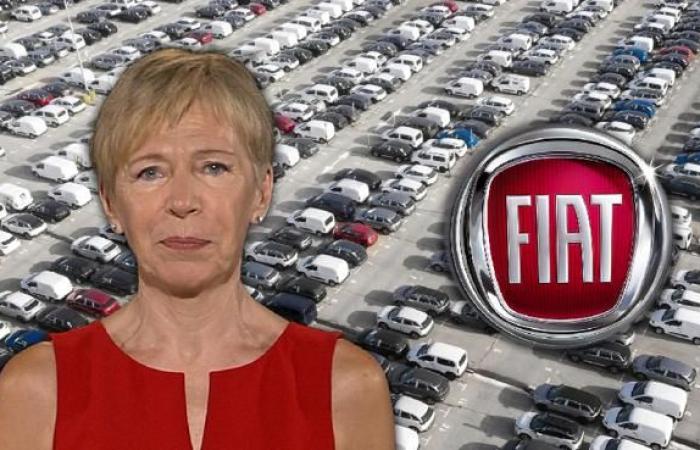«My grandfather had 70 percent of Fiat shares in his portfolio and he managed them by paying low dividends and mostly to himself. He preferred to set aside as a reserve and with the reserves he built the great Mirafiori.” This is what the lawyer said Gianni Agnelliwhich he preferred instead high dividends and the use of public money to expand the company. His grandson and heir John, who is “great” in Italy, is leaving very little. All things considered, how much has the automotive group, which has changed its name twice in ten years, received from the Italian state? And with what commitments? It is known that in the Fiat phase the group was able to count on a huge amount of public funds. Entire factories in the South were built with state resources (Melfi, Termini Imerese). It is impossible to reconstruct what was given in absolute value, much less the counterparts. The documents cannot be found in the competent ministries. According to a survey conducted by Davide Bubbicoprofessor of economic sociology at the University of Salerno, starting from the program contracts often signed with Cipe, between 1990 and 2019 (also including Magneti Marelli, Iveco and Pwt) the total contributions would amount to approximately 4 billion euroscompared to just over 10 billion in declared investments. This is an inevitably partial reconstruction, from which however it can be estimated that at least 40% of Fiat investments have been financed over the years by the Italian State.
Change the name, change everything
On 12 October 2014, Fiat Chrysler Automobiles was born from the merger of Fiat and Chrysler (FCA), with registered office in Amsterdam and tax domicile in London. The CEO Sergio Marchionne reduces the request for public aid but state subsidies, although limited, continue. In 2020, in the midst of the pandemic, with the Conte II government in office, FCA receives 6.3 billion loan covered by public guarantee. The credit line was to be used to pay salaries, suppliers and maintain planned investments in Italy. Money certainly useful for the merger with the French PSA group, from which Stellantis was born on 17 January 2021, which then freed itself from the constraints by settling the accounts a year in advance. Carlos Tavares, the highest paid CEO in Europe, takes command: 23 million euros a year, as much as the salary of a thousand of his metalworkers.
State aid and shock absorbers
The National State Aid Register has been operational since 2016. We consulted him: from October 2016 to January 2024, aid was paid, first to FCA and then to Stellantis, for 100 million euros. Including approx 7 million in incentives for machinery renewal with industry 4.0. Then there is the redundancy fund. From an INPS source we see the exact numbers for the first time: between 2014 and 2020 FCA received contributions for 446 million (of which 263 paid by the company). From 2021 to April 2024 the cash register rises to 984 million (280 paid by the company). Summing up: in nine years between layoffs, incentives for hiring and expansion contracts, we have paid out almost 887 million.
Employees: 10 thousand fewer in 3 years
Given all these donations, how is the Stellantis group doing? When he was born (January 2021) they worked in Italian factories 52,740 employees. At the end of 2023, employees had dropped to 42,700. The perimeter of the group remained unchanged. So lost in three years 10 thousand jobs. These are voluntary exits incentivized with “slides” that travel between 30 and 130 thousand euros. So how much has the company “invested” to get workers out of Italian factories? Stellantis doesn’t say. It is estimated that they have been mobilized 6-700 million. Meanwhile the bleeding continues: according to Fim, which signs the agreements for the fund and is now present in all the factories, there are other 3,000 redundancies.
The Melfi and Mirafiori cases
Between 1991 and 2020, 3.35 billion in public funds were disbursed for the Melfi plant intended for the construction of the plant and its related activities. In the 2021when was she born Stellantisthe employees were 6,800today they dropped to 5,600. Mirafiori In the 2006 produced 218 thousand cars, this year according to Fiom, risks falling below 21 thousand, the historic minimum. In what was the largest European factory, opened in 1939, today only the 500 electric and the Maserati GT and Gran Cabrio. The average age of employees is 57 years oldit means that if there are no hires it will close due to consumption.
A mountain of dividends
How are shareholders doing in the same period? Very good. The main one is the Agnelli family through Exor with the 14.9%then there are the French state with little more than 6.4% and the family Peugeot with the 7.1. Starting from January 2021 to May 2024 Stellantis distributed 16.4 billion euros in dividendsof which 2.7 they went into the holding of John Elkann to Amsterdam. And for next year the group has already announced that the amount of dividends distributed will increase.
Eco-incentives for all cars
The rest, i.e. 1.95 billion, are incentivizing the purchase of new cars. The 40% (almost 800 million) goes to cars Stellantisof which only half are produced in Italy.
And here we are at one of the crux of the issue: should the public funds mobilized with incentives serve to reduce pollution (indirectly helping the automobile industry) or to increase demand indiscriminately?
The Meloni government has reorganized the incentives so as to direct them to cars produced in Italytherefore the 500 electricthe Jeep rechargeable hybridsbut also the Panda on petrol produced in Pomigliano. This year there are 403 million destined for thermals with emissions between 61 and 135 g/km. No other European country encourages the purchase of cars in this emissions range. It should also be said that according to a study by the EU Commission, rechargeable hybrids are actually ithey pollute more than they declare because they are rarely used in electric vehicles. The question remains whether it is worth encouraging cars that pollute without even having guarantees on production in Italy.






